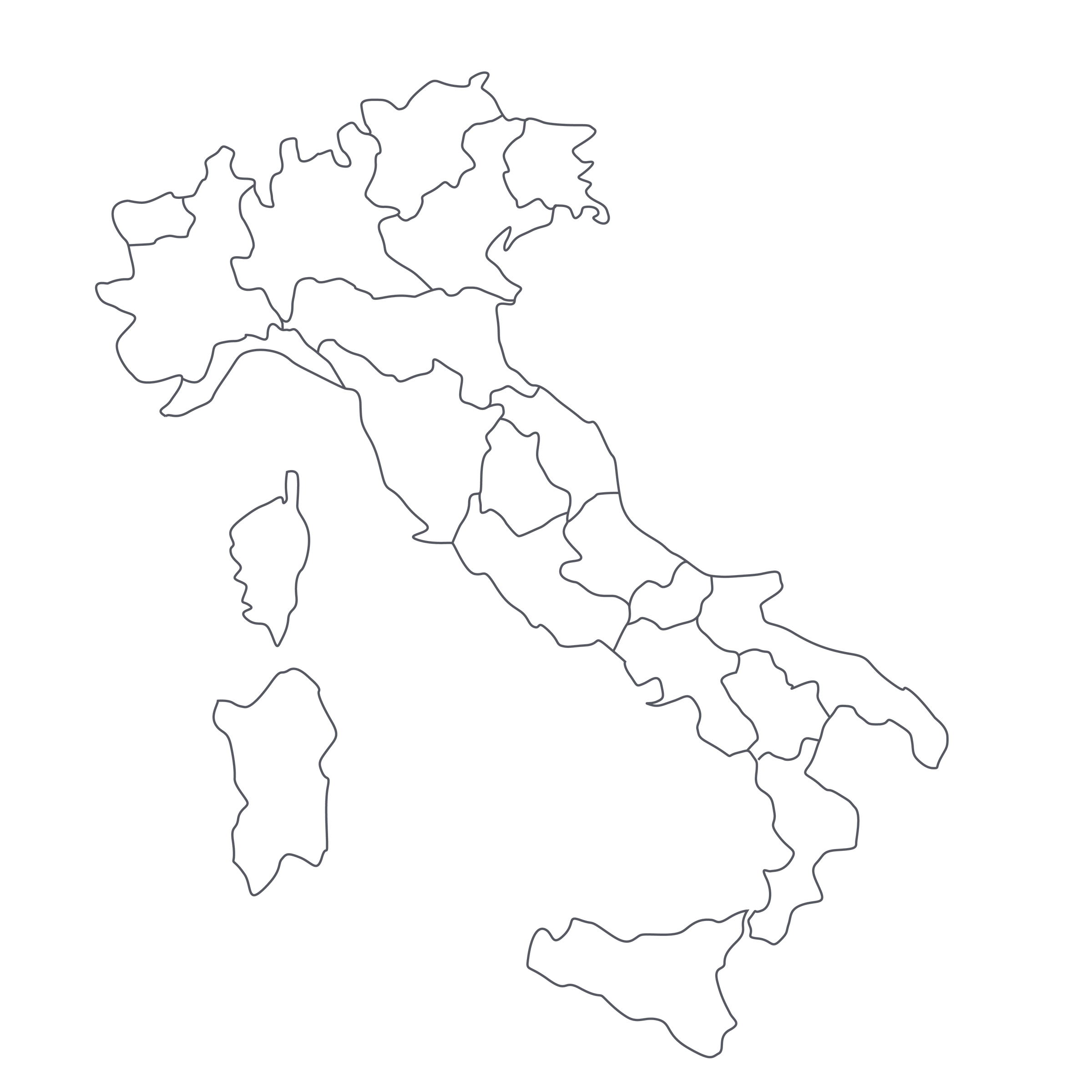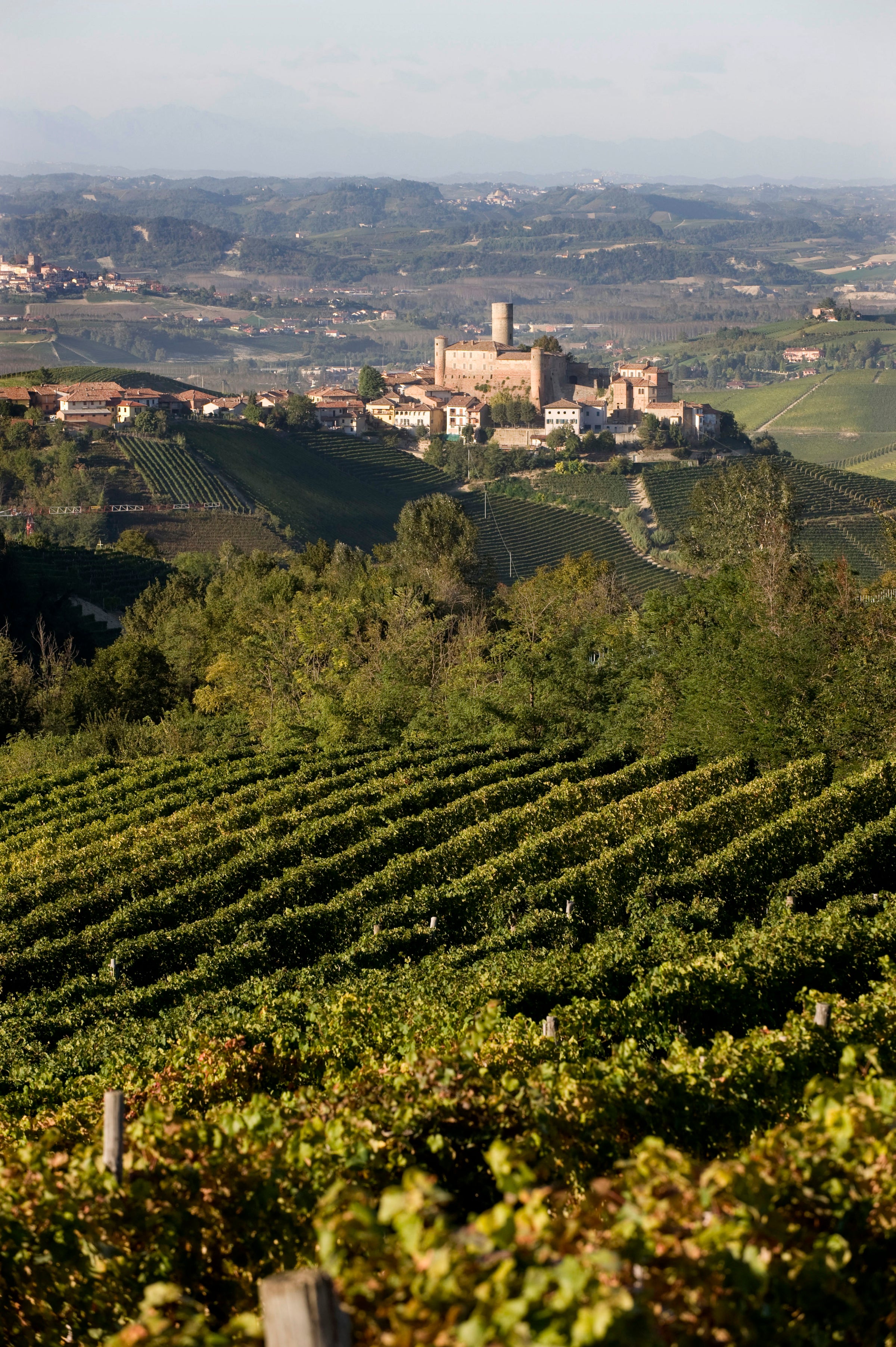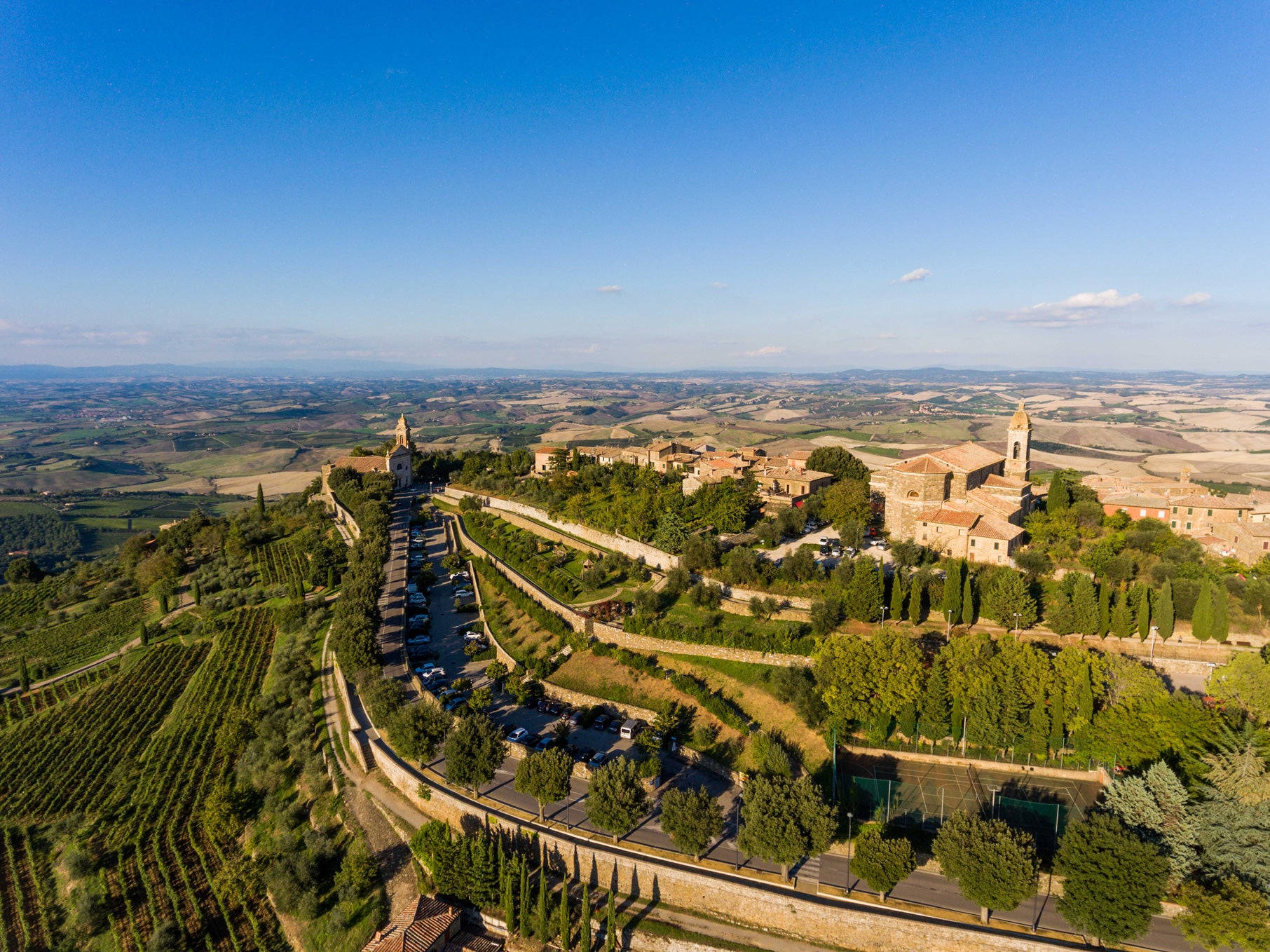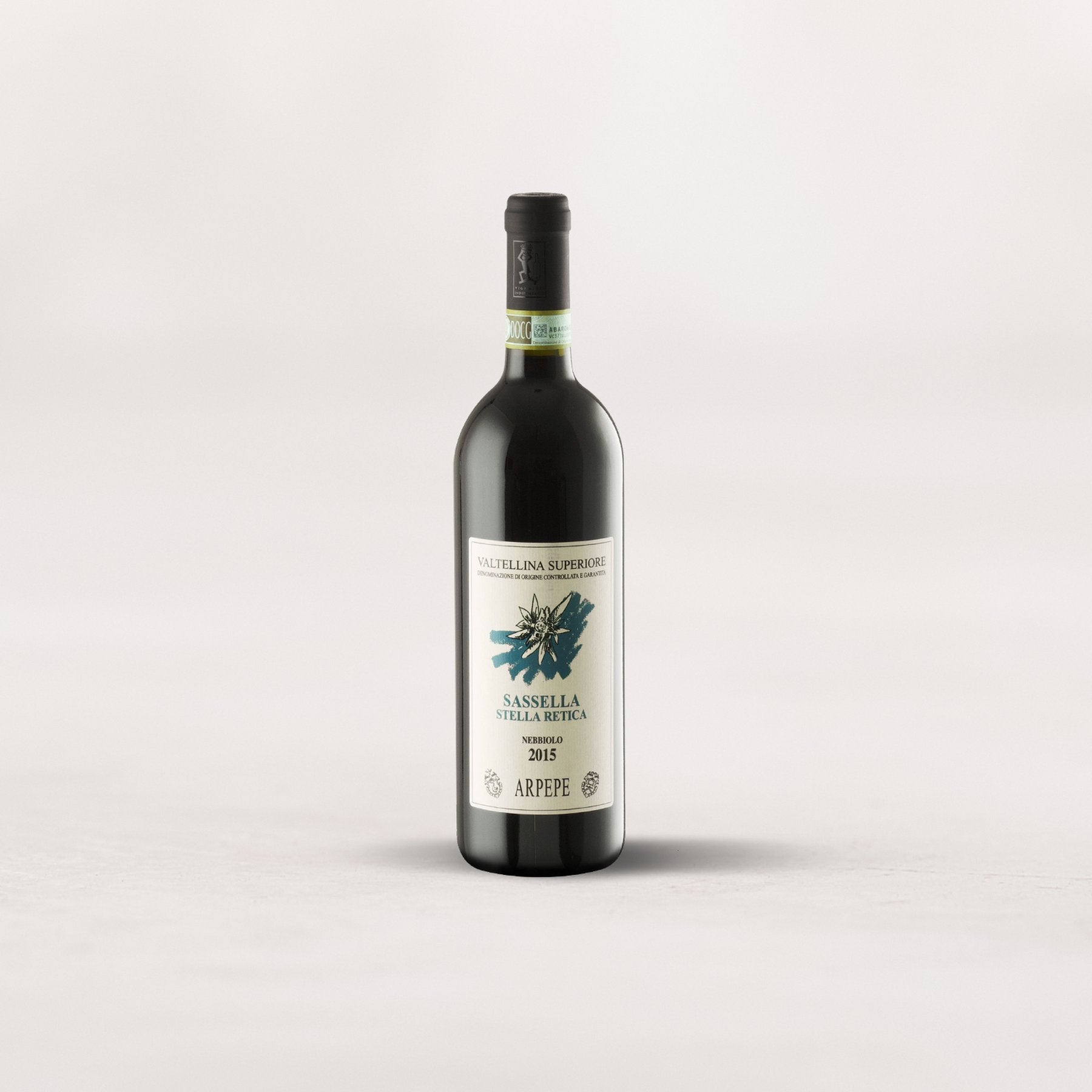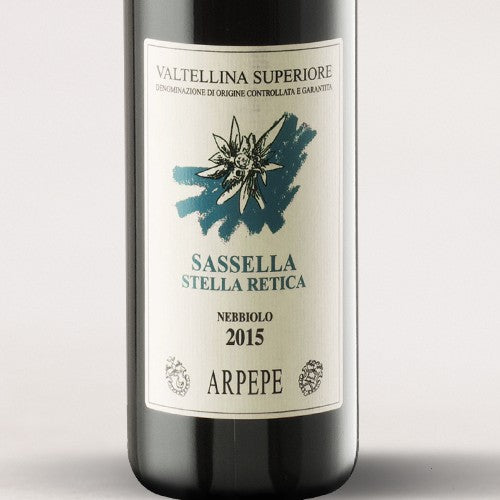It’s no exaggeration to describe viticulture in Italy’s Valtellina as “heroic.” The same is said about Côte-Rôtie in France, the Mosel River Valley in Germany, and Ribeira Sacra in Spain. Why are producers like AR.PE.PE. willing to tend vines on slopes so treacherously steep that harvest would be better carried out by helicopter? Because the resulting wine is so worth it! The return of AR.PE.PE.’s single-vineyard masterpiece, “Stella Retica,” is cause for riotous celebration among lovers of the Nebbiolo grape, as it is not merely one of the iconic reds of the Valtellina but one of the great Nebbiolos made anywhere.
Sourced from “Sassella,” one of the region’s famed “Grand Cru” sub-zones, this 2015 was painstakingly wrought from 50- to 100-year-old vines dug deep into rocks and sand, then aged nearly five years in barrel and bottle before it was released into the market. A lot has been invested here, and what a payoff—namely, one of the most aromatically complex and sublimely finessed Nebbiolos you’ll taste this year. Although the grape is the same, there’s no comparing this wine to anything from Barolo or Barbaresco, and there’s no need to—other than to say they are equally great. Then there’s the question of price: When I think of how many elite red wines this wine leaves in the dust, for just $60, it boggles my mind.
The vineyards of Valtellina, which sit in the shadow of the Rhaetic Alps along Italy’s border with Switzerland, aren’t merely “hillside” vineyards: Valtellina is a sheer rock wall with vines that cling to it for dear life. Hand-laid stone terraces keep everything from sliding down to the Adda River Valley below. The siblings who run AR.PE.PE—Isabella, Emanuele, and Guido Pelizzati Pérego—estimate that it requires about 1,500 person-hours to farm a single hectare of vines over the course of a growing season. No doubt producers in Côte-Rôtie can relate: The two regions share many similarities, right down to the family names emblazoned on the terrace walls, visible from way down in the valley below.
The soils in the region are a highly variable, rocky mix of alluvial gravel, sand, granite, and limestone since a lot of the material used to construct the terraces in the first place was hauled up from the banks of the river below. Because the Adda follows an East-West path, vineyards are planted only along the north bank, giving them full-south, all-day sun exposures in a climate that might otherwise be too cool to ripen grapes—especially the late-ripening Nebbiolo (called Chiavennasca in these parts). Just to the north are the snow-capped peaks of the Swiss Alps. The intensity of Nebbiolo’s tannin/alcohol levels in Valtellina is tamped down somewhat, as you might expect in a marginal mountain climate such as this.
AR.PE.PE.’s beautiful subterranean winery sits amid (and underneath) the vineyards of Grumello, which, like Sassella, is one of the officially delimited subzones of the Valtellina Superiore appellation (AR.PE.PE. is short for Arturo Pelizzatti Pérego, who sold his family brand to another winery back in the early 1980s, only to later decide to re-enter the wine business, on a smaller scale, a few years later; the acronym was created to avoid confusion). Valtellina is a tiny growing zone, spanning only about 300 hectares of vines along a 30-mile stretch of the Adda. In addition to Grumello, there are four other officially delimited vineyards, or subzones, under the Valtellina DOCG umbrella: Inferno, Valgella, Sassella, and Maroggia. All these sites have a multiplicity of owners farming and bottling wines from them, and for a wine to be called Valtellina Superiore with a vineyard designation, it must be comprised of at least 90% Nebbiolo from said vineyard and be aged a total of 24 months (12 of which must be in wood barrels) before release.
“Stella Retica” is 100% Nebbiolo from AR.PE.PE.’s oldest plots in Sassella. It is left to macerate on its skins for an epic 120 days during fermentation, then spends 18 months in 50-hectoliter oak barrels. Further aging was carried out in concrete tanks and then in bottle (24 months) before release, and still this wine is just getting started! In the glass it’s a deep, brick-tinged garnet-red, with aromas that make you feel like you’re picking berries in the woods: raspberry, black cherry, and cranberry scents are followed by an earthy wave of tobacco leaf, rose petals, fennel, sage, tar, leather, and black tea.
The wine is just north of medium in body, with wooly tannins, tangy acidity, and long, lingering finish tinged with a hint of smoke. It’s kind of a Gevrey-Chambertin/Barbaresco love child, unmistakably Nebbiolo in its mineral savor but lifted and finessed in a way many Barolo/Barbaresco wines are not. If you are enjoying a bottle soon, decant it 30-60 minutes before serving in large Burgundy stems at 60 degrees (the cooler temperature will accentuate the aromatics and the fruit component). Otherwise, lay some bottles down for a lengthy slumber—AR.PE.PE. wines have a track record of great longevity, but regardless of when you choose to open one, know that this is not a “cocktail” red: It requires food, preferably something earthy, hearty, and somewhat “Alpine” in nature. You’re more likely to see tartiflette on the other side of the Alps, but it will be amazing with this wine. Enjoy!
